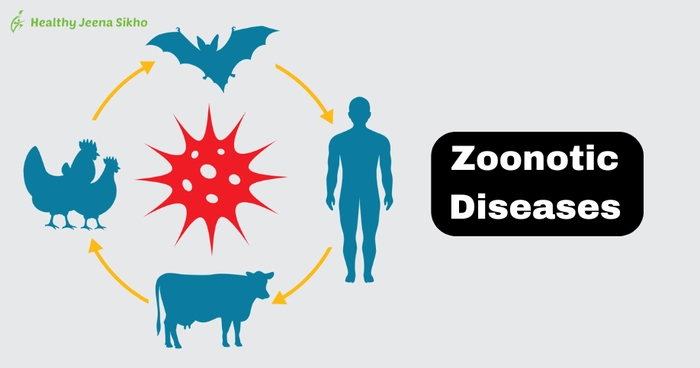|
As the world grapples with the lingering impacts of COVID-19, attention has increasingly focused on zoonotic diseases—those transmitted from animals to humans—and their role in pandemics. Zoonotic diseases have shaped human history, from the plague to modern-day coronaviruses, with many originating from the wildlife trade and animal farming. One concerning development is the discovery of dangerous viruses, such as HKU5, in small-scale Chinese fur farms. In this blog, we will explore the origins of COVID-19, the potential for the next pandemic, and how wildlife trade contributes to the spread of deadly viruses. Understanding Zoonotic DiseasesZoonotic diseases are infections that spread between animals and humans. They can be caused by bacteria, viruses, parasites, or fungi. These diseases account for 60% of all infectious diseases in humans and are responsible for some of the deadliest outbreaks in history, including Ebola, rabies, and most recently, COVID-19. Why Are Zoonotic Diseases Dangerous?- Cross-species transmission: Many pathogens that cause zoonotic diseases can evolve quickly, adapting to new hosts, which makes them harder to control. - High mutation rates: Viruses like coronaviruses have high mutation rates, which can lead to the emergence of new, more dangerous strains. - Human-animal interaction: As humans encroach on wildlife habitats and engage in activities like hunting or farming, the chances of zoonotic spillovers increase. Small-Scale Chinese Fur Farms: A Breeding Ground for Viruses Recent research has highlighted the potential for dangerous pathogens to emerge from small-scale fur farms in China. These farms breed animals like mink, raccoons, and foxes for their fur, but the conditions in which the animals are kept—close confinement, poor hygiene, and stress—create an ideal environment for viruses to spread. In fact, fur farms have already been identified as reservoirs for coronaviruses, such as HKU5, a strain that experts warn could potentially lead to the next pandemic. What Is HKU5?HKU5 is a type of betacoronavirus found in bats but has also been detected in fur farm animals. Like SARS-CoV-2 (the virus responsible for COVID-19), HKU5 has the potential to jump from animals to humans, given the right conditions. The virus has shown the ability to bind to human cells, raising concerns that it could cause future outbreaks. Why Are Fur Farms a Concern?1. High animal density: Thousands of animals are often kept in close quarters, allowing viruses to spread rapidly. 2. Genetic similarity to humans: Animals bred on fur farms, such as minks, have physiological similarities to humans, making them ideal hosts for viruses that can jump species. 3. Inadequate regulation: These farms are often poorly regulated, with minimal oversight, increasing the likelihood of viral outbreaks. Wildlife Trade and Virus OriginsThe wildlife trade, particularly in China, has long been linked to the spread of zoonotic diseases. Wet markets, where live animals are sold in close proximity to humans, have been identified as hotspots for viral spillovers. The origin of COVID-19 is still debated, but many experts believe it may have emerged from wildlife sold in markets in Wuhan, China. How Does the Wildlife Trade Contribute to Pandemics?- Biodiversity disruption: The capture and trade of wild animals disrupt ecosystems, forcing species that normally wouldn’t come into contact with each other to interact, increasing the chances of viral transmission. - Exotic species as carriers: Wild animals often carry viruses that are not harmful to them but can be deadly to humans when transmitted. - Unregulated markets: Many wildlife markets operate with little regulation, creating the perfect conditions for viruses to jump between animals and humans. The Origins of COVID-19: A Zoonotic SpilloverCOVID-19 is a stark example of how zoonotic diseases can disrupt the global order. While there is still debate about the exact origins of the virus, there is strong evidence that it originated in animals, possibly bats or pangolins, and spread to humans either through direct contact or through an intermediary species in wet markets. Did COVID-19 Come from a Lab or Nature?While some have speculated that COVID-19 could have accidentally leaked from a laboratory in Wuhan, the prevailing scientific consensus is that the virus likely emerged naturally through a zoonotic spillover. Many experts believe that wet markets in Wuhan, where live wild animals were sold, created the ideal conditions for the virus to jump from animals to humans. Why the Next Pandemic Might Have Already StartedThe discovery of dangerous viruses like HKU5 in Chinese fur farms signals that the next pandemic might be lurking around the corner. As the global population continues to grow and human-wildlife interactions increase, the risk of zoonotic diseases spilling over into humans also rises. Key Factors Driving the Risk of the Next Pandemic:1. Global wildlife trade: As long as the wildlife trade continues, there will be a constant risk of zoonotic viruses jumping to humans. 2. Animal farming: Intensive animal farming, particularly in poorly regulated environments, can serve as a breeding ground for new viruses. 3. Climate change: Changing environmental conditions due to climate change are altering animal migration patterns and ecosystems, leading to more frequent interactions between wildlife and humans. Preventing the Next PandemicTo prevent the next pandemic, there needs to be a global effort to regulate the wildlife trade, improve conditions in animal farming, and monitor zoonotic diseases more effectively. 1. Regulating Wildlife Markets: Countries should implement strict regulations to ensure that wildlife markets are either eliminated or highly regulated to reduce the risk of zoonotic transmission. 2. Surveillance of Zoonotic Diseases: Governments should invest in research and surveillance of zoonotic diseases, particularly in regions where the wildlife trade is prevalent. 3. Public Awareness: Increasing public awareness about the dangers of zoonotic diseases can lead to better practices in handling animals and reduce risky behaviors. ConclusionZoonotic diseases pose an ever-present threat to global health, with the wildlife trade and poorly regulated animal farming being key contributors to the risk of future pandemics. As seen with the origins of COVID-19 and the potential threat from viruses like HKU5, it’s clear that humanity must address the underlying causes of zoonotic spillovers if we are to prevent the next pandemic. Tightening regulations on wildlife markets and fur farms, improving surveillance of zoonotic diseases, and fostering international cooperation will be essential in safeguarding the world from future outbreaks. |

